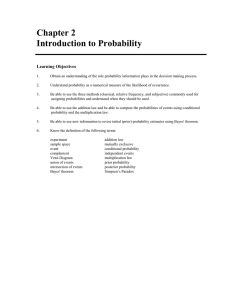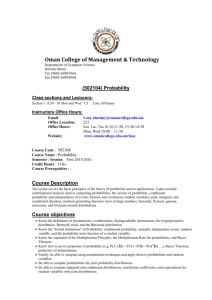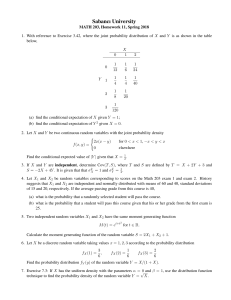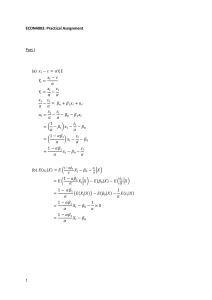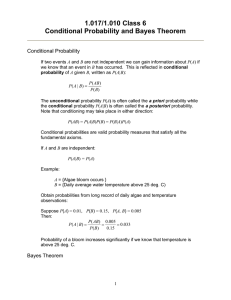Document 10413167
advertisement
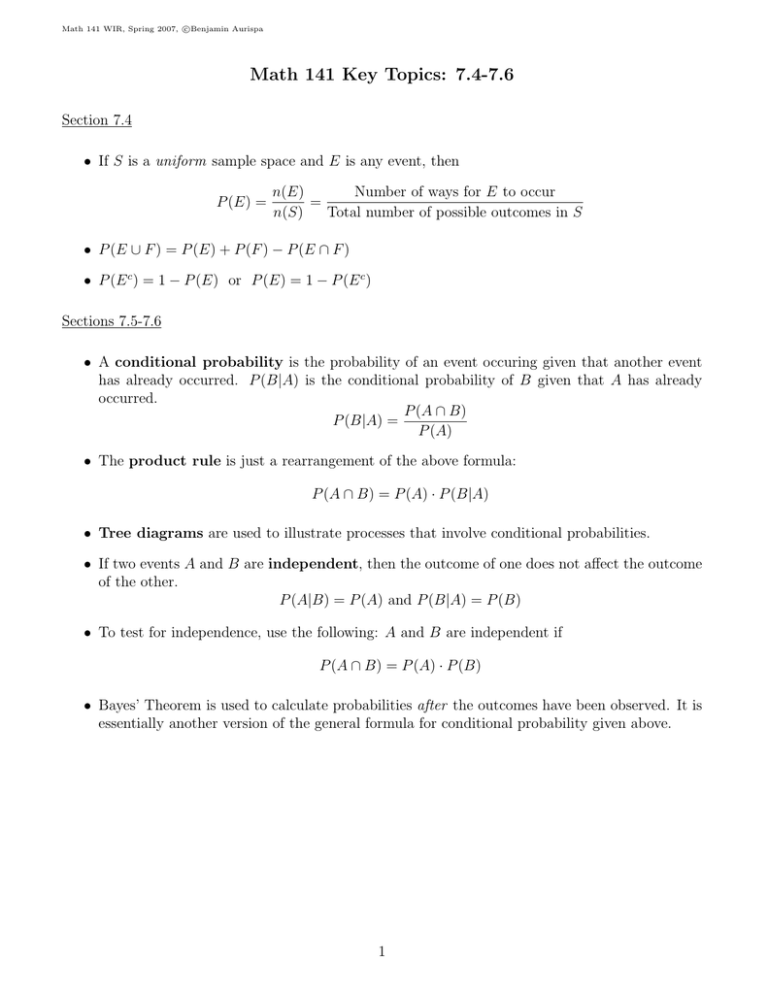
c Math 141 WIR, Spring 2007, Benjamin Aurispa Math 141 Key Topics: 7.4-7.6 Section 7.4 • If S is a uniform sample space and E is any event, then P (E) = n(E) Number of ways for E to occur = n(S) Total number of possible outcomes in S • P (E ∪ F ) = P (E) + P (F ) − P (E ∩ F ) • P (E c ) = 1 − P (E) or P (E) = 1 − P (E c ) Sections 7.5-7.6 • A conditional probability is the probability of an event occuring given that another event has already occurred. P (B|A) is the conditional probability of B given that A has already occurred. P (A ∩ B) P (B|A) = P (A) • The product rule is just a rearrangement of the above formula: P (A ∩ B) = P (A) · P (B|A) • Tree diagrams are used to illustrate processes that involve conditional probabilities. • If two events A and B are independent, then the outcome of one does not affect the outcome of the other. P (A|B) = P (A) and P (B|A) = P (B) • To test for independence, use the following: A and B are independent if P (A ∩ B) = P (A) · P (B) • Bayes’ Theorem is used to calculate probabilities after the outcomes have been observed. It is essentially another version of the general formula for conditional probability given above. 1

